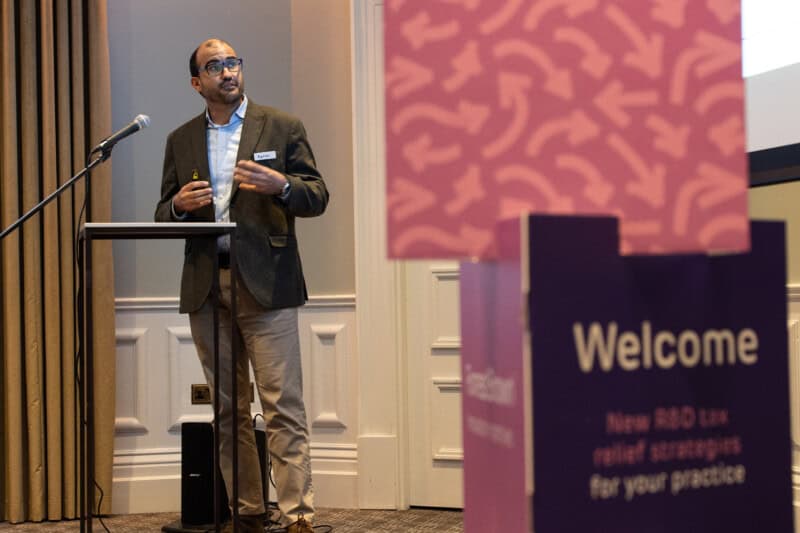The ForrestBrown team held a series of events across the country this spring for senior leaders in the accountancy industry.
Continued change, complexity and uncertainty means that now, more than ever, clients need expert advice on R&D tax relief. Against that backdrop, we asked attendees how confident they feel when advising clients following the introduction of the merged scheme and increased scrutiny from HMRC. Only 9% said they feel very confident, while 41% were not confident at all.

Accountants also felt HMRC had not provided sufficient guidance on the merged scheme, and an eye-opening 87% said the current compliance approach is having a deterrent effect on their clients claiming R&D tax relief.

Actionable R&D tax strategies for accountants
With this in mind, we shared five strategies to enable accountants to get back on the front foot. At ForrestBrown, we remain passionate about the transformative power of R&D tax relief. But in order to benefit, businesses need more proactive and strategic advice.
1: Review your client portfolio for R&D intensity and risk
Alongside the merged scheme, the government introduced Enhanced R&D Intensive Support (ERIS). This offers a more generous rate of relief to loss-making SMEs which meet a threshold based on R&D costs as a percentage of overall business expenditure. Not only that but the removal of subsidy restrictions means that grant-funded projects will be eligible to claim outside the RDEC incentive for the first time.
Conversely, it’s important to understand changes which could represent a risk to your clients. For example, restrictions on overseas R&D are likely to impact businesses operating global R&D programmes or making use of specialist skills not available in the UK. The rules on contracting out R&D have also been rewritten, with upstream and downstream implications for supply chains.
2. Take a proactive approach to pricing and engagement terms
The greater likelihood of an enquiry (HMRC’s confirmed earlier this year that it now checks over 20% of claims compared with around 1% previously) suggests that more consideration should be given to enquiry support. That means commercial models which previously passed muster may no longer be fit for purpose or provide the right service levels for clients.
By taking a range of factors into account, from enquiry risk to the number of project descriptions to be included in the Additional Information Form, accountants can ensure their offering reflects the new R&D tax relief reality.
It’s also worth reviewing your engagement terms to check what you’re including in your fee, and making sure your insurance cover reflects this – and protects you.
3. Develop flexible resource options for claim preparation
This is where ForrestBrown can help. The way we work with accountants is tailored to your needs, meaning you can draw on as much of our resources as you need on a case-by-case basis. For example, you may want to bring in specialist support for software claims, or if your client faces an enquiry. Whatever your individual situation, ForrestBrown can adapt and devise an appropriate plan that supports your practice and your clients.
4. Create a clear strategy for disputes
If you do find yourself – and your client – facing an enquiry, it’s important to be aware of the procedural levers available for tax dispute resolution. These include internal appeal, statutory appeal and alternative dispute resolution (ADR) – all of which ForrestBrown can advise on.
On the rare occasion that disputes cannot be resolved using one of these mechanisms, ForrestBrown can draw on its specialist in-house legal expertise to assist with assessing and preparing cases for hearing at Tribunal. Invariably though, the foundation built during the enquiry is essential to the ultimate success of any of these options.
5. Explore alternative funding options
Adopting a forward-looking approach to R&D tax relief means that advisers can’t ignore direct funding any longer. Investing in horizon scanning for clients can help to identify other funding options. These can be triggered by factors including R&D, capital expenditure, job creation and sustainability. Keeping track of the evolving landscape for grant funding is particularly important at a time of political change, with any new government likely to set fresh priorities and target sectors. Other alternative funding options include capital allowances and Patent Box relief.
Pivot to a proactive approach
If your accountancy firm/practice would like to pivot to a proactive approach to R&D tax relief, ForrestBrown can help. With more than a decade’s experience working with some of the UK’s most innovative companies, we will help to support you and your clients to navigate the new R&D tax relief landscape.
For more information on how we can support you, speak to our team.

